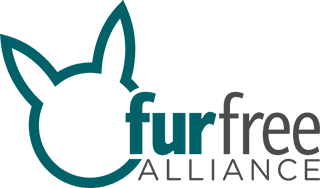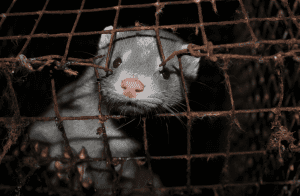
Violations found at more than half of the Swedish mink farms in 2014
SWEDEN, 19 JANUARY 2015 – Djurens Rätt (Animal Rights Sweden) has mapped the County Administrative Boards’ inspections of mink farms in Sweden during 2014. At just over 6 out of 10 inspected farms shortcomings in animal husbandry were noted despite the fact that nearly half of the inspected farms were notified in advance about the inspection.
Djurens Rätt has compiled the records of the inspections made by the County Administrative Boards at mink farms in Sweden in 2014. The summary shows that 23 inspections were conducted among the 70 mink farms that exist in Sweden. At 15 of the visited farms shortcomings in animal husbandry were noted even though almost half of the inspections were announced in advance.
‘This is clearly unacceptable but unfortunately we are not surprised. Compliance with the regulations at mink farms in Sweden has been appalling for many years’,
says Camilla Bergvall who is in charge of fur issues at Djurens Rätt. In the county with most mink farms in Sweden, Blekinge, only four inspections were conducted at the county’s around 30 farms during last year. All four inspections were unannounced and all showed several serious breaches. Among other shortcomings, one inspector noted that in many of the cages at one of the farms there were several dead and injured minks along with other minks. Another mink farm in Blekinge had not had a single visit from a veterinarian or ethologist during the year, which is a legal requirement.
”We know since a long time that mink farms do not belong in a country with a modern view at animal welfare. The inspections by the County Administrative Boards last year is just another piece of evidence”,
says Camilla Björkbom who is the Chair of Djurens Rätt.
An extract from what the County Administrative Boards’ inspectors have reported in the inspection protocols:
• Damaged and dead minks were seen together with healthy mink at one farm.
• Deficiencies in the killing protocol were registered at three farms.
• Too many minks were kept in each cage at one farm.
• Cages had incorrect measures at four farms.
• At two farms there were broken cages with risk of injury for the minks.
• Two farms were reported to have unsanitary conditions and poor ventilation.
• Three farms did not meet the requirement for free access to water.
• Nest boxes without litter were reported at two farms.
• Lying shelves were missing or had incorrect measures at seven farms.
• Two farms had incorrect permits for the number of breeding animals.
• Three farms were reported for having had too few or no visits by veterinarian / ethologist.
• Requirements for activation for the minks were met not at two of the farms.
• Requirements for lighting were not met at eleven of the farms.




